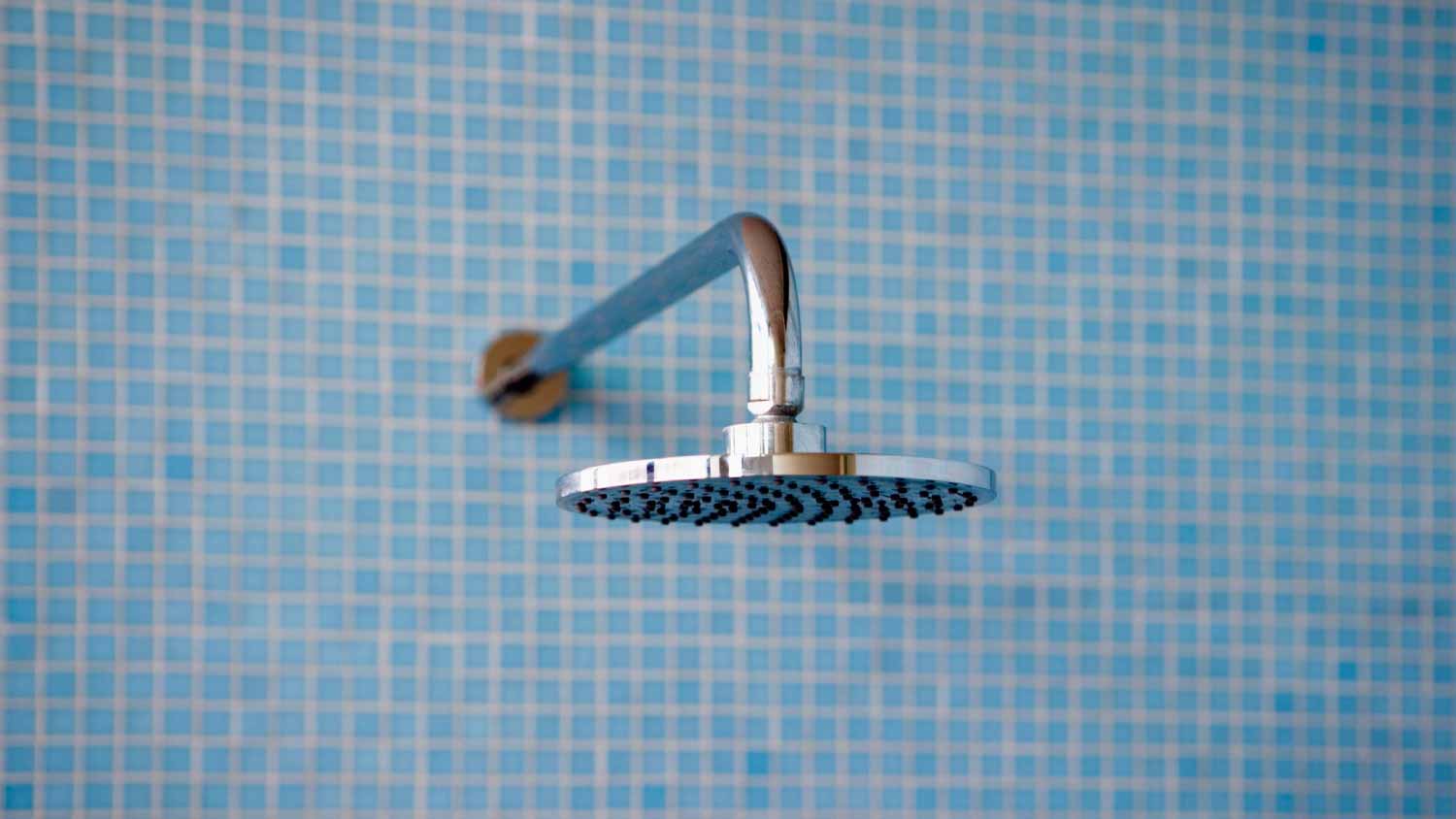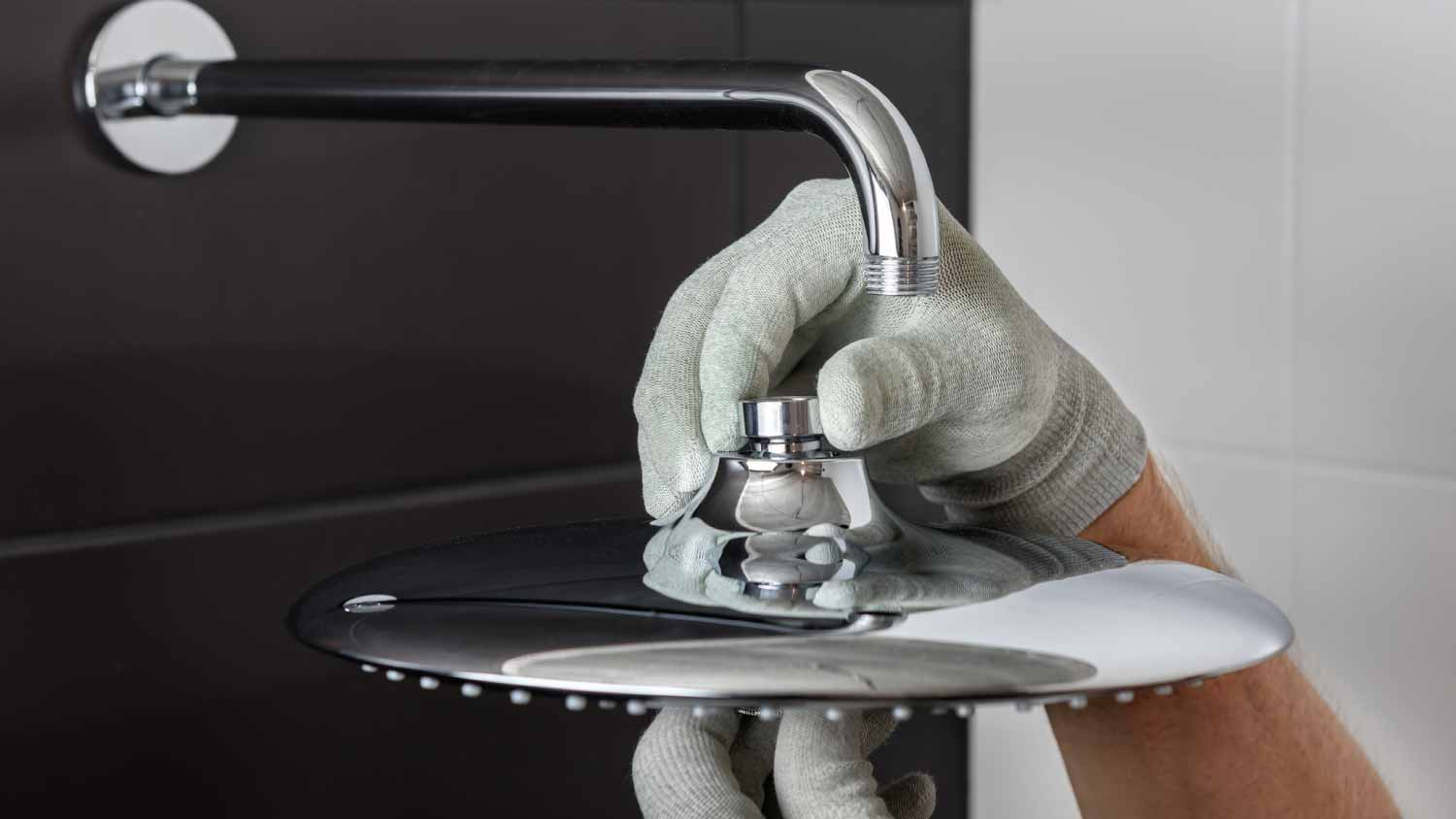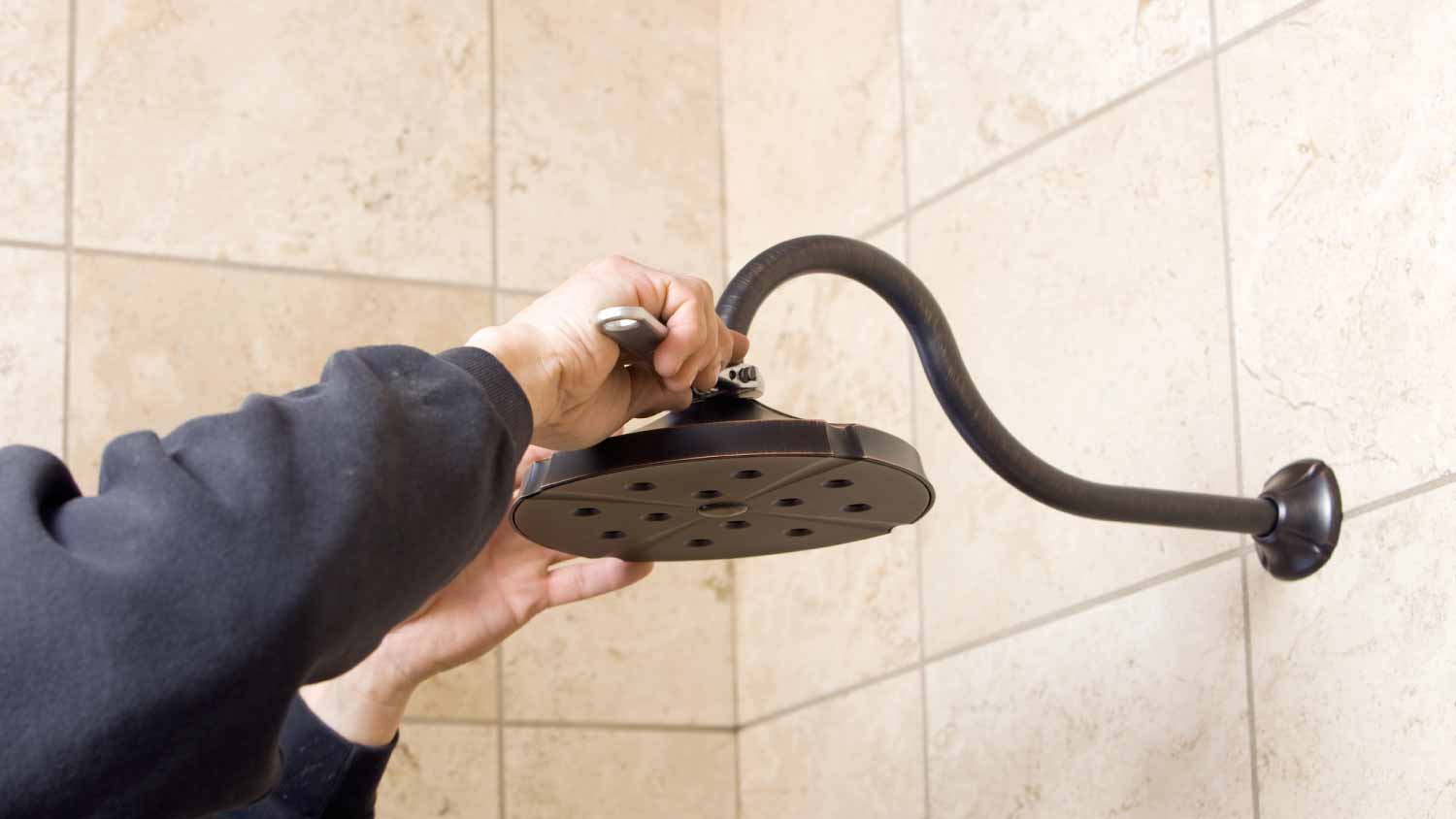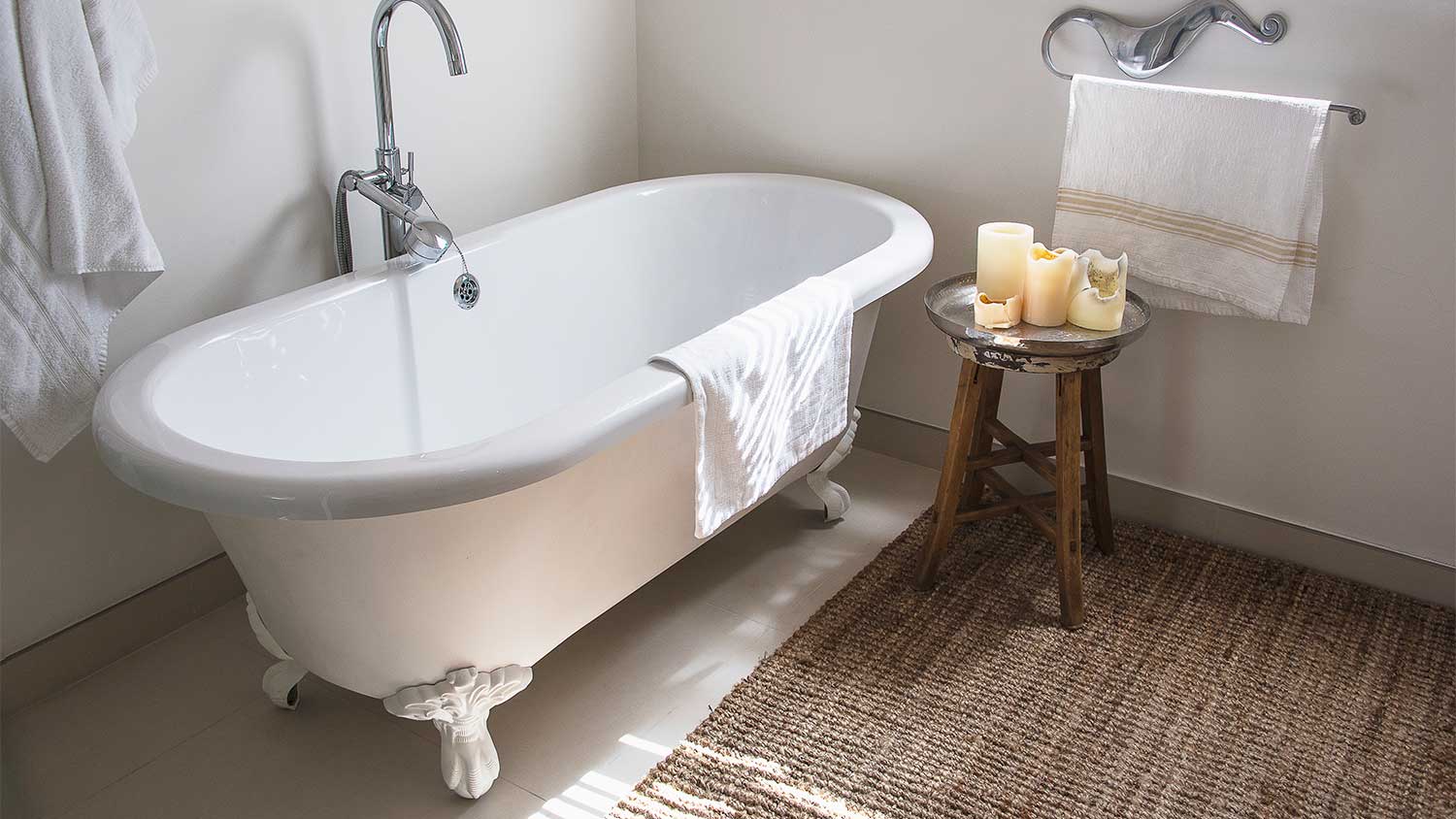
Shower installation costs depend on size, style, and materials. No matter the budget, this guide can help you plan your project and even save a few bucks.
Ditch the wobbly, drippy shower arm with a simple upgrade


If you’re looking to learn how to install a shower arm, we’ve created an easy-to-follow tutorial to help turn a wobbly, leaky shower into the home retreat it should be. As long as you have an adjustable wrench and an hour or two, there’s a good chance you can handle this project on your own. However, there are times when you might want to call in a pro, like if you’re doing other upgrades or dealing with old, encrusted pipes. If you’re ready to take this on, here are nine steps to installing a shower arm.
Turn off the water main to your house. If you don’t want to cut the water everywhere, you can also turn off the water valve in the bathroom, which is located underneath the sink.

You can replace the shower arm with the showerhead still attached to the old arm, but the replacement process is much easier without the showerhead. Once the shower arm is replaced, you can change the showerhead or reinstall the old one.
To remove the showerhead, hold the shower arm in place with one hand while using an adjustable wrench to loosen the showerhead nut. If you're concerned about scratching the finish, place a cleaning cloth between the nut and wrench.
If the showerhead doesn’t budge, try removing the built-up scale by holding a bucket or bowl with enough vinegar to cover the showerhead and up to the shower arm. As the scale begins to loosen, try removing the showerhead again.
Remove the old shower arm by grasping it with an adjustable wrench and turning it counter-clockwise. Be gentle, and if the arm doesn’t turn easily, don’t force it. Shower arms can crack or break, which makes removal more difficult.
Try wiping away residue or scale, and put metal lubricant on the joint where the shower arm and water supply pipe meet. Check the lubricant instructions, as the lubricant may need an hour or longer to work. Afterward, gently try removing the shower arm again.
Once the old shower arm is removed, clean the threads of the water supply pipe. You may need to wipe it clean to remove mold and mildew. Apply some vinegar or scale remover to the pipe and then scrub with a brush or wipe away residue.
Wrap plumbing tape around the water supply pipe threads. The tape helps create a watertight seal. Alternatively, you can use plumber’s putty, which creates a tighter seal but is messier to apply.

Align the new shower arm with the threads of the water supply pipe and carefully screw the arm onto the pipe. Don’t force the two to fit together. You don’t want to cross-thread the shower arm and potentially damage the threads.
You may have to unscrew the shower arm and try again before it’s threaded correctly. Once it's threaded correctly, use a wrench to tighten it. If you’re concerned about the wrench scratching the shower arm, you can place a cleaning cloth over it.
Wrap the threads of the open end of the shower arm with the plumber’s tape to help create a stronger seal. Alternatively, you can use plumber’s tape to achieve the seal.
Attach the showerhead to the new shower arm by aligning the threads and manually tightening. Before fully tightening it with an adjustable wrench, check the threads for correct alignment one more time. If the threads are off at all, unscrew the showerhead and try again.
Once it’s aligned and tightened by hand, tighten it a little more with an adjustable wrench. Whether you’re installing a new type of showerhead or reinstalling the old one, it’s a good idea to place a soft cloth between the showerhead and the adjustable wrench to prevent scratches.
Turn the water supply back on and check the shower arm and showerhead for leaks.
You may be tempted to skip steps like adding plumber’s tape or putty to the water supply pipe. Don’t skip this step though because the putty tightens the seal, making leaks less likely. Read through the putty instructions, as some application instructions vary by manufacturer.
The other big mistake to avoid is forcing the showerhead or old shower arm on or off. If the shower arm doesn’t loosen quickly, it can easily break, complicating the project. Take the time to clean off buildup, scale, or mildew, and apply metal lubricant before putting too much pressure on the pipe or showerhead.
Even if you don’t have much DIY experience, this is a project that most beginners can handle. However, there are circumstances in which you might need to contact a local shower installer to take care of this job. If changing the shower arm is part of a larger shower remodel, a pro can ensure all the shower components work together. You may also want to leave this job to the professionals if you’re changing the location of the water supply pipe or dealing with old pipes that may not be standard size or could be in poor condition.
From average costs to expert advice, get all the answers you need to get your job done.

Shower installation costs depend on size, style, and materials. No matter the budget, this guide can help you plan your project and even save a few bucks.

A bump-out addition is right for you if you want to add extra space to your home without adding a new room. Learn about the different bump-out addition costs.

Remodeling your bathroom can add significant value to your home. Your bathroom remodel cost in Columbus, OH will depend on size, fixtures, materials, labor, and other factors.

An updated bathtub can give a bathroom a whole new look. Find out how much it costs to replace a bathtub in Seattle, WA, including prices by type and labor costs.

From increasing resale value to being tricky to maintain, there are plenty of pros and cons of copper kitchen sinks. Figure out if they’re right for you.

When planning a bathroom remodel for older adults, start by evaluating the mobility needs of the specific individuals residing in the home.